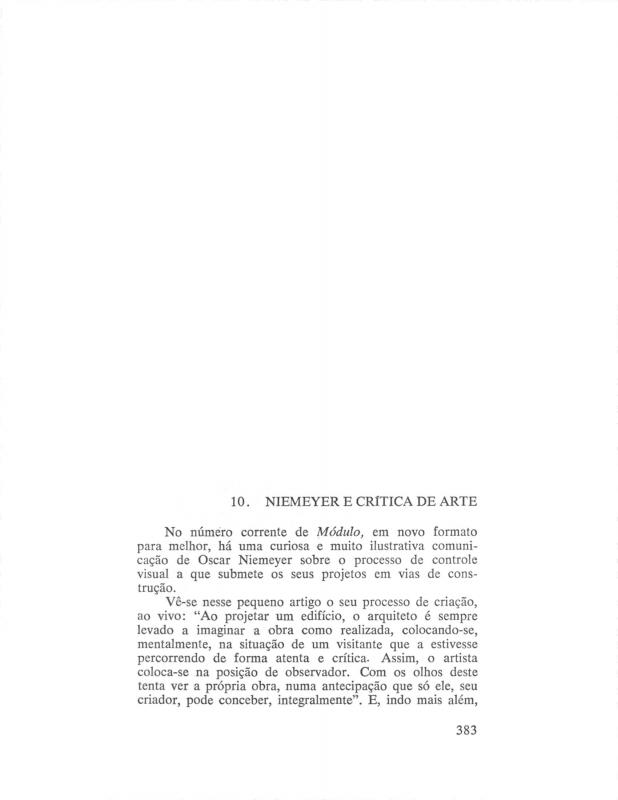Mário Pedrosa makes use of the theories formulated by British architecture critic Geoffrey Scott [which he discussed in another essay available in the ICAA digital archive, “Niemeyer e crítica de arte” (doc. no. 1086699)], a disciple of American art historian Bernard Berenson. This architectural critique by Pedrosa has to do with perception of space as seen by an observer; it is not a technical, functional or intellectual vision of a project, and the critic appears confident that this focus on process approaches the construction of a work of art; in his judgment, this is fundamental to the understanding of contemporary art—especially for the work produced by Concrete artists (São Paulo) and neo-Concrete artists (Rio of Janeiro). He proposes a “reversed space” concept that he relates to the “Moebius strip,” a form used by Max Bill in his work Dreiteilige Einheit [Tripartite Unit, 1948–51], which won the grand prize at the first São Paulo Biennial (1951).
Mário Pedrosa (1900–81) was an intellectual and politician, and undoubtedly the key theoretician and critic on Brazilian art of the 20th century. He began as an international politics correspondent for the Diário da Noite, and beginning in the 1920s he was affiliated with the PCB (Communist Party of Brazil). He was imprisoned in 1932 because of his political militancy (Trotskyism). During the Estado Novo of Getúlio Vargas, he lived in exile in France and New York, and only returned to Brazil after the Second World War, when he worked for the Correio da Manhã. His opposition to Stalinism led him to found the Vanguarda Socialista, a weekly publication. He presented a thesis on aesthetics called “Da natureza afetiva da forma na obra de arte” (1949) at the School of Architecture (Rio) that made use of his philosophical background, and his knowledge of Gestalt psychology; during that time he also became one of the founders of the AICA (1948) and also organized the International Conference of Art Critics (Brasilia, 1959). He wrote an arts column for the Tribuna da Imprensa (1950–54) and was an organizing member of the II and III São Paulo Biennials (1953 and 1955), later becoming director of the MAM-SP (1961–63). He served as secretary for the National Council of Culture during the brief government of Jânio Quadros. During the military dictatorship he took refuge in Chile, where he became director of the Museo de la Solidaridad in Santiago; after the Pinochet coup (1973), he left for Havana, where he served as secretary for the Museo de la Resistencia Salvador Allende. He only returned to Brazil in 1977 (at the beginning of the amnesty) and was the first to sign the manifesto creating the PT (Party of Workers, 1980). His vast library (which included eight thousand volumes) is partially available at the national library in Rio de Janeiro.

